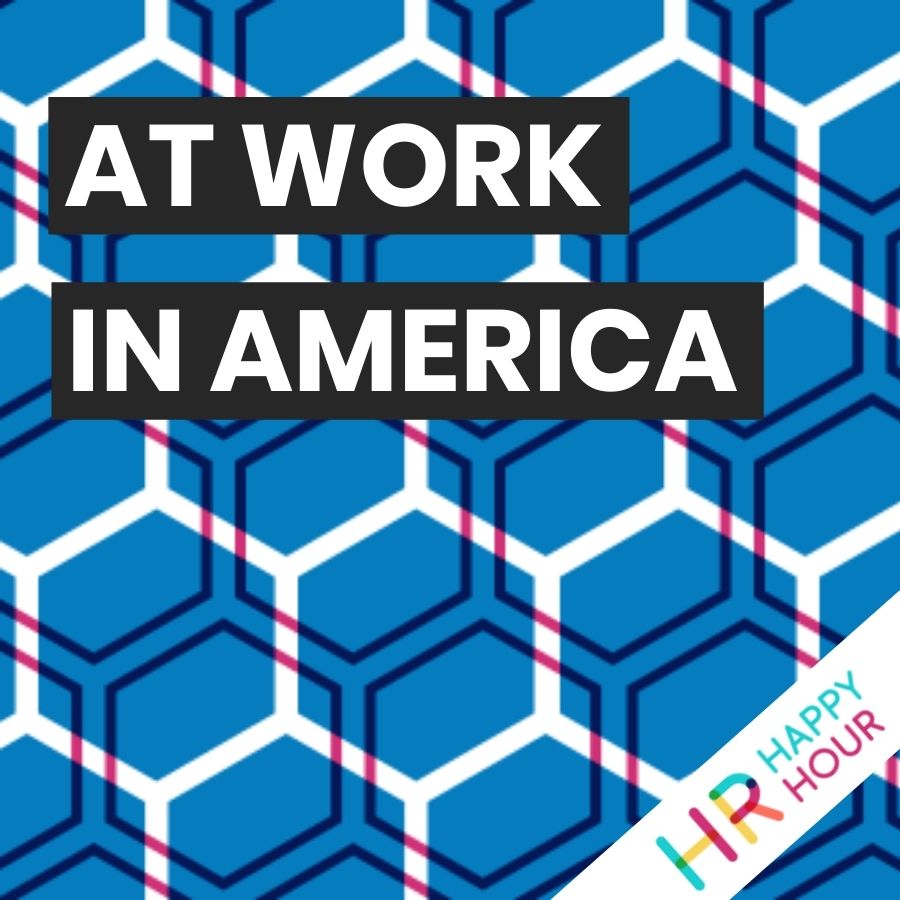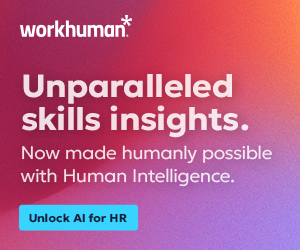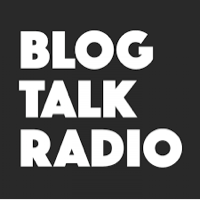Viva Magenta: Exploring the Colors and Trends Behind PANTONE’s Color of the Year
Hosted by

Steve Boese
Co-Founder and Chief Data Officer of H3 HR Advisors and Program Chair, HR Technology Conference

Trish Steed
Co- Founder and Chief Strategy Officer, H3 HR Advisors
About this episode
Viva Magenta: Exploring the Colors and Trends Behind Pantone’s Color of the Year
Hosts: Steve Boese, Trish Steed
Guest: Laurie Pressman, Vice President, PANTONE Color Institute
This episode of At Work in America is sponsored by Paychex, one of the leading providers of HR, payroll, retirement, and insurance solutions for businesses of all sizes. The only constant in business is change, and 2023 will be no exception. That’s why hundreds of in-house compliance professionals at Paychex compiled a list of regulatory issues that could impact businesses the most this year to help you prepare. In our guide, find out about federal and state regulations and programs that may affect your business and your employees in the coming year, so you can take appropriate action now. Visit paychex.com/awia to check it out, today.
This week we met with Laurie Pressman of the PANTONE Color Institute to talk about the 2023 color of the year – Viva Magenta.
– Impact of color in the workplace
– Factors in determining the PANTONE color of the year
– How color can be used as a differentiator in your organization
– Exploring our favorite previous colors of the year
Thank you for joining the show today! Remember to subscribe wherever you get your podcasts!
Transcript follows:
Announcer 0:00
Welcome to At Work in America sponsored by Paychex. At Work in America digs in behind the headlines and trends to the stories of real people making a difference in the world of work. And now here are your hosts, Steve Boese and Trish Steed.
Steve 0:27
Welcome to the At Work in America show! We have a great show for today, I think it’s going to be my favorite show of the year. It’s very early in 2023. I expect this is my favorite show of the year already. Trish, we’re going to be talking with Laurie Pressman, who’s the Vice President of the Pantone Color Institute, about the 2023 color of the year, for this year, but also a little bit more broadly about what the color of the year means and how it influences the world of work in industry, fashion and everything else Trish. You know, I love the Pantone color of the year as well as you do.
Trish 1:02
I know we’ve been talking about this for so many years. I think we’re coming up on a decade of at least talking about it. I think you look back, you’ve been writing about it since 2015. So long time coming. I’m glad we have our guests on the show today. And you’re right, I think one of the things you and I also do is instead of making resolutions every year, we’ve always kind of said we use the color of the year as inspiration for how the year might go from a work perspective and our own business. So really excited to kind of find out how they go about deciding that and what implications there are for all of these other industries as well.
Steve 1:37
And last thing I’ll mention before we get on with the show is a friend of the show might know Trish, that the Christmas gift that I purchased for you were Pantone branded mugs, colored aubergine that I sent to you for Christmas.
Steve 1:52
So let me before we welcome our guests officially, let me thank our friends at Paychex. This episode of At Work in America is sponsored by Paychex, one of the leading providers of HR, payroll, retirement and insurance solutions for businesses of all sizes. The only constant in business is change and 2023 will be no exception. That’s why hundreds of in house compliance professionals at paychecks have compiled a list of regulatory issues that could impact businesses the most this year to help you prepare. So in the Paychex guide, you can find out about federal and state regulations and programs that may affect your business and your employees in the coming year. So you can take appropriate action now. And you can visit paychex.com/awia to check that out today. And thanks to our friends at Paychex. I’m repping them with their hat today. And the nice navy blue since we’re gonna we’re talking colors today. I don’t even know I think it might be navy.
Trish 2:47
It’s a very dark blue, I believe. Yes.
Steve 2:50
It’s very nice. Let’s welcome Laurie, she can tell us maybe Laurie Pressman leads the business and creative strategy for the Pantone Color Institute, and the Pantone fashion and home product line. And she has over 20 years experience in product development and merchandising for fashion and home furnishing brands and retailers. And lots of lots of accolades that go on forever. We don’t need to graciously Laurie said, Don’t bother reading all that stuff. Just welcome me to the show. And I am officially welcoming you Laurie to the show. How are you today?
Laurie Pressman 3:18
I’m great. Steve and Trish. How are you guys?
Trish 3:21
Doing well.
Steve 3:22
So excited. We have wanted to talk about this on the podcast for ever honestly, and I know this is a workplace and a human resource is often our technology podcast sometimes. And I don’t care. This is one of my favorite subjects. I’ve been writing about this for close to a decade on my website. Trish and I talked about this all the time. So we’re super excited to have you here, Laurie. First off, maybe let’s start with the headline, right, just a couple months back down, maybe a little less Pantone released the color of the year selection for 2023. I’d love for you to tell us before we get into how you come up with the color of the year in the process and what the team does there. Maybe let’s just talk about the color itself a little bit for 2023. And what it kind of signifies or symbolizes.
Laurie Pressman 4:09
The color for 2023 is Viva magenta. I mean right off the bat, this is a color that really speaks to a celebration, Viva life. And when we think about Viva Magenta, this is a color that vibrates with vim and vigor. It’s a shade rooted in nature that was very important to us that descend from the red family, and really writes a new narrative for where we are today. It’s a brave color to fierce color. It’s a color whose exuberance promote optimism and joy. It’s a powerful color. It’s an empowering color. When we think of the reds, typically that is really attributes that belong to the reds, but this particular shade of red is a really animated read. It’s a nuanced crimson tone. It’s a color that encourages experimentation and self expression. It’s a color that really makes a standout statement.
Laurie Pressman 5:00
It’s a balance between warm and cool, it has that little touch of blue in it. So that’s kind of an interesting place to be. So it’s not your typical red. This is why we’ve called it an unconventional color for an unconventional time. It’s also a hybrid color we live today in a world that is multi dimensional. So we always have to be aware of physical color versus digital color. And this is a color that really comfortably straddles the physical and the virtual world. We would also say it’s a color that’s audacious, it’s witty, it’s inclusive, a color that does not boldly dominate, that’s very important too, because sometimes when we think of the reds, you think of them as being very aggressive and overpowering, this is not that kind of a red, this is a red that’s really about being audacious and witty, so a little bit different. And it would, we would say this takes a fist in a velvet glove type of approach. And I think that really says it all. So it’s strong, it’s confident, but it’s not overpowering, and in your face, and that and there’s a big line there. Because I think we live in a world today. Where we have to extend grace to other people, we have to meet them where they are, right, we want to be strong. We want to be confident with who we are and what we present. But at the same time, you don’t want to be overbearing.
Laurie Pressman 6:18
So I think it’s a really important distinction. And I think this whole idea of this being a red that is more celebratory, I think that’s what we’re looking for, too. We’re looking for that vibrancy, we’re looking for that uplift, we’re looking for life, we’ve been living in challenging times. But we can talk a little bit more about that, also. But I think the fact that this is also connected to nature is really important, because as we see with trend today, there’s two, I don’t want to say they’re diametrically opposed, but two, overriding macro trends that are influencing color. And that is nature, we’ve been seeing nature take more important role as time has gone on. At the same time, I think our experience with COVID, we’ve really learned to appreciate the beauty of nature, because we had time, that was one of the few places where we can really be free, let’s say is to spend time outdoors. So maybe before you were passing nature, on a train, or in a plane or in a car, but now you were really spending time outdoors and a lot of more outdoor activities. At the same time, the experience with COVID was really about the acceleration of digital, you know, we’ve become so much more reliant on technology and digital tools. So yet, again, I go back to nature and where inspiration is coming from. So for us, this whole idea that this is a color that was inspired by the red of the cochineal beetle, right. And this is when we think about those dyes. This is one of the most precious dyes belonging to the natural dye family, as well as one of the strongest and brightest, the world has known. So a color rooted in the primordial, primordial that reconnects us to original matter that invokes the forces of nature, it really helps to galvanize our spirit and help us to build our inner strength. So probably a lot more than you wanted to know about Viva magenta?
Trish 8:05
No, you know what, Laurie? It’s fascinating. I’ve literally took a page of notes, as you’re saying this, because, as Steve kind of alluded, you know, he and I have been very into color and the impact on the workplace and the way people are just approaching life during the work day. Really, like everything you said, really ties back to those same workplace themes, interestingly enough, so even though that might not have been the intent, I mean, when you’re talking about both the decision, right for the color, but but celebration, you talked about optimism, we talked about inclusion, I mean, these are things that in the work world, we’re talking about every day of how to tie all of those things to get together. And I don’t know that whether you’re, you know, in human resources, or maybe a member of the C suite, who’s listening to the show, if we really think enough about the impact of color, on the way that we all feel at work. So first of all, just thank you for sharing that. Thank you also for sharing about the inspiration from nature, because I had not really thought of magenta. My first reaction to magenta, I thought, interesting. That’s not something we see a lot in nature. But you really did explain how we actually are seeing that in nature. And maybe it’s just being more sort of opening our eyes to where that occurs in nature, having it being rooted in nature. So could you maybe share a little bit about? Obviously, you all spend a lot of time thinking about all of these things that we may not realize when we see the announcement from a team perspective, when you’re all starting to kind of talk about the color of the year. How does that process work? And how did you all kind of come together on sort of these being the most important factors when you were looking at the color?
Laurie Pressman 9:56
Well, as head of the Pantone Color Institute, I manage a group or team of people involved in color and trend. These are people who see life through the lens of color. You know, I think that’s something that’s, it’s, that’s a gift truly. But it’s also people who have experience across all different levels of design or all different areas of design and live around the world. And we also through the Pantone color Institute, create our own trend books are also working with a lot of clients on color for brand visual identity color for products. So our work is vast and varied. And it’s always a place of what’s new. And next, but understand when I say that, these are people that see life through the lens of color, color as a language. So when we look at what’s taking place in the macro culture, there’s a way that it gets expressed. And it gets expressed through the language of color, almost so much of that when you go back through different decades, and you can see the colors that were important at that time, you can identify what was happening and why these colors came to become popular when they do.
Laurie Pressman 11:03
So to arrive at the selection each year, this global team of people who are always looking at what’s new, and next, whether it’s work for our clients, whether it’s work for our trend books, whether it’s calling out colors for fashion weeks, or what have you. They’re always on the lookout and always thinking about color of the year, and they’re looking for new color influences. And this could come from entertainment films in production, traveling art collections, new artists, fashion, all areas of design, aspirational travel, destinations, new lifestyles, new play styles, enjoyable escape socio economic conditions. I mean, it could be new technologies, materials, textures, and effects, everything influences color. So it’s almost like being color anthropologists, right? And being able to connect the dots, where is this showing up? It is a color we see crossing all areas of design around the world. So it’s what’s bubbling up to the top. Because if you think about color of the year, it’s not a forecast. It’s a reflection of what’s taking place in the culture at a moment in time.
Laurie Pressman 12:05
So again, color being a language, we have macro color trends, how is this being expressed? Why are people gravitating to the colors they’re gravitating to? And now saying this is what’s happening. So it’s a very thoughtful process. It’s a very strategic process, it is tied to education. When we first introduced this back in 1999, it was to educate people on the relationship between color and culture. And it was also because people kept saying to us, what’s the one color? There’s never one color, right? There’s just never one color. But what sums it up. So I don’t know that this is you know, where I would say to you, oh, we sit in a room and we just talk about color the year for two hours. It doesn’t work like this. This is one of these unform alized processes that goes on continually. It just goes on continually. We won’t I would that said I would say we probably take at least I do a couple months break. I mean, because this team is living in in research and trend. But we won’t really start to have this conversation probably until March, April, March or April, because it’s too early. And when you think about how fast everything moves now, right? Our biggest concern is that we get it wrong. Like if we get it wrong, and the messaging just doesn’t resonate, and it doesn’t come across as this is why like, why did we need this color. And I’m going to go into the backstory, which I think would be really interesting for people to understand, because there is so much thought that goes into this. But so we try to call it as late as we can. Because we we just you know, we just don’t want to get it wrong. And that’s so. So like, we’ve been doing this since 1999. You know, you have to think about that. So we have to be credible.
Steve 13:57
Or like you mentioned fashion and design and product design, I think about something and so you know, so not silly but something is is like it’s all in everybody’s kitchens in their homes and in their offices, right. I think of something like like for in Weiser matter, I think of something like that the US ubiquitous if you’re a baker, right, those those stand mixers, right, we’ve seen for forever, right? You don’t really need a stand mixer. It can be they could all be black, right? Or silver, right? They could all be that color. You don’t really, they do the same thing, whether they’re green or yellow, or orange or purple, or it’s the same product. But when you see them, you see the array of them, right? Maybe on display or on a website for sale or something. And that’s just one example. You think, oh, that yellow one is the one I want. That one speaks to me right or the green or whatever the color is, right? And so that’s a silly example maybe or a small one, but it also I think a meaningful one where it’s these the His decisions around color and how color the meaning of color in our lives, right? It’s really profound. And even if we don’t think about it on a day to day basis.
Laurie Pressman 15:09
I think the meaning of color in your life is profound. I mean, it’s something that it first of all colors, the first thing that catches your eye, it’s the first thing that engages you, which is why color is considered the most important. communication tool versus text. Because it’s something we immediately connect to when we have an immediate reaction to it’s unconscious. So color influences us, I think it’s about almost 95% of the choices we make, in our reactions to color our unconscious. And I what I find so fascinating, when it comes to color is how our perceptions change. Right? Two years ago, let’s just say I’m not saying Viva magenta. Which to digress for one moment, you know, I neglected to mention the importance of the color name for us when we make our selection, because a color name immediately brings to mind a feeling. Color is all about emotion, right color is all about evoking a feeling. So two years ago, to come back to this, I may have seen a particular shade of green and said, I don’t like that today, I may look at that chinning going, oh my god, I love it, I have to have it. So talk about color. And as you mentioned in the stand mixer that can sit on your counter. And what that does, and why all of a sudden you had that black stand mixer. Now you want this purple one example. But I think is color. It’s the first thing it evokes a feeling it makes you happy, or it doesn’t make you happy.
Laurie Pressman 16:39
And I think we’re looking for things to surround ourselves with that bring beauty into an environment is it real appreciation of beauty color influences, we would have said in the past, up to 85% of of decisions when it comes to purchase a product, I would almost increase that even more so today because I think today we are making so our choices for what we purchased are so much more considered. Right? We’ve been so focused on sustainability, we don’t want to waste we don’t want to throw things out that we don’t need anymore. We’re repurposing we’re recycling, you know, so you’re holding buying something and hopefully holding it on to a bit longer. And, and that is if we are buying something, if we weren’t thinking about buying something, well, what is going to incentivize us to buy it? Do I really need another sweater? I don’t know. But I gotta have that color. Gotta have that lipstick, gotta have that pillow. So I think it’s colored to me is all about emotion and how something affects you is going to be very different than how it may affect me. Yes, there’s certain characteristics and a color, no question. But what you gravitate to, may be a little bit different than when I may gravitate to just based on who we are.
Trish 17:51
You know, all of that. It’s as you’re saying, it’s something I don’t think about on a daily basis. But it makes so much sense. As you’re saying it, one of the things I just immediately jotted down as you were talking about how color engages you. And one of the big things that leaders today are faced with is trying to have an engaged team and engaged workforce, engaging new candidates, that sort of thing. But I can assure you, we really don’t think about color, necessarily other than maybe our brand color, when we’re talking about hiring people retaining workers, that sort of thing. And maybe it is because as you mentioned, we all have a little bit different reaction to color. Are there any colors? I want to kind of flip it a little bit? Right? Are there any colors that maybe hurt or hinder engagement that we should watch out for? Because, you know, maybe if we want to be really engaging, you know, we try and match the colors of the group we’re talking with? Or if we want to seem like a more of a leader, we might try and wear the shades of red or something. But are there colors kind of on the flip side that that might repel people that we’re not thinking about? Is there anything in your research that shows that?
Laurie Pressman 19:05
I don’t think there’s anything in our research that would show that there’s colors that repel people that you’re not thinking about, because everybody’s going to have a different reaction, and everybody’s going to have a different unconscious bias. So a long time back there was this whole campaign, I believe it was in Australia where they were calling it the ugliest color. And the goal was to deter people from smoking. And so they covered the package with this color. And we would say that color is all about context. You take that color and put it next to something else, all of a sudden, it’s like, wow, this really pops. So it’s not just the color. It’s the pairing of colors and the environment in which that color appears. And I would say the other thing. I don’t know if there’s a generic answer to that if I’m leading in a creative industry, I may wear a different gamut of color because I want to exemplify that that kind of level of creativity. So I may be a little bit more daring in my use of color, whether it’s in my office, or the colors that I choose to wear to meetings with people versus if I was working in a more corporate setting, right. I mean, I think you have your more typical, you know, blues being the most universally loved color family. Why is that because hopefully see it in the sky everyday. It’s dependable, we’re comfortable with it, right? So we know that something in the blues is usually going to be pretty, quote unquote, safe. You know, and think about denim. That’s the most universal piece of clothing that we wear. And everybody thinks about the denim blues. And there’s something just really nice about that. When we think about the reds, it’s the most accepted Bright family. Right? So I think even if you go back to working girl, you know, the time of the 80s. And those red power suits, you know, women could get away with, I don’t want to be gender, gender fIying this or but you go back and there was a very different time and place.
Laurie Pressman 20:58
Today, you see Billy Porter, walking onto the stage of the Golden Globes and that fabulous Viva Magenta outfit. And you’re like, Wow, great. And that works for him. If somebody was running a bank, or Goldman Sachs, I’m not sure that that would be the best attire for somebody to wear. So it’s contextual, know your audience. And I think when it comes to color, people have to give themselves permission. One of the things we really see today, and especially playing into this whole feeling of this color of giving yourself permission to express who you are, right, I think that’s so much that’s come out of the pandemic, where people is not just about color, but just in general about who they are, and really learning to embrace who they are embrace their strains not punish themselves. And I think that’s a really big thing. And I think it’s a really important thing. So if we look at this as it relates to color, give yourself permission to try something different. You know, if this is a color, or you see some colors, that might be a little bit, you don’t think of them as being you, for example, whether it’s in your decor of your office, your home, your personal life, give it a try, you know, try on a different personality. That’s the great thing about calling you don’t have to leave it on. You can try it on and take it off or bring it into your life in a way that’s not overpowering. So give it a chance.
Trish 22:16
Good suggestions.
Steve 22:18
Yeah. So I have like 17 more questions, which we I know we don’t have time for but one thing I’ve noticed a little bit too Trish, your question made me think of it some and we see this in our work, we see this working with organizations and the corporate space. Laurie, you mentioned the red power suit, I’ll never forget a number of years ago, I was at a big conference, right big workplace conference. And it was the, the I don’t remember her name. So we won’t call her up by name, but it was the global head of human resources for Coca Cola, right coming to give a speech at this event. And she was in the bright red power suit. Right up at the Coca Cola red. Right, which that makes sense. Yeah, and we have another partner we do some work with, and I’ve been in they’re called their corporate colors is a green, it’s a very vibrant green, I don’t know specifically the shade, but it’s green, and you go to visit them. And not only are is everything decorated in green accent, certainly right in the office. But an astonishing number of the individuals who are working there are either wearing that green or accessorizing. In that green, whether it’s a tie or a scarf, you know, it reminds me a little bit of color. And how we use color or color can be used for bringing people together around shared ideas, shared thoughts, shared experiences, sports, certainly sports teams, right being one example. Right? We see that all the time. But I find that fascinating. And another powerful expression of the importance of color that maybe we don’t think about, normally, but it happens all the time.
Laurie Pressman 23:57
It does happen all the time and color. So two different places I would go down with that. One is color is a great way to call attention to something. So if we go back to colors, the thing that immediately engages your attention. When we think about protest movements, over the past years, whether it was the yellow jackets, I believe in France, when you saw that the white the whole suffragette thing. So color is a great way if everybody’s wearing the same colors, I think it was distinction, extinction rebellion with the orange and pink coming together in Hong Kong, you saw the black, you know, everybody wearing the black vest. So it’s a great way to help as a visual identifier. And if you go back to that same concept, whether it’s in a workplace, everybody visually identifying with the company, they’re working for being part of something that color identifies that they are a part of that group. Right. And the same thing with a sports team. It’s a way to call out who you identify with.
Steve 24:53
Yeah, for sure, for sure. I think the last thing I wanted to ask Laurie was I know brand identity is its own thing. And there’s experts and organizations right that that advise companies on either new companies on developing a brand or or maybe changing Is there things you think about organizations to think about which we see this all the time, Trish, even companies we’ve worked with, who might have been around for a really, really long time and decided we need to refresh or rebrand or re rework, including we’ve got one big client we work with who is a very well known, quote, unquote, red company. And it was very much a part of their ethos. And you identified with them who’ve undergone a significant change in their branding and their coloring, right, that they use, is there. Is there a considerations there? Is there advice is some Is that something that Pantone and our partners get involved with and thinking about what what the implications might be of making changes like that?
Laurie Pressman 25:57
Absolutely. I mean, that’s the Pantone Color Institute, we work with a lot of brands, I would say our soul. If I look at it day to day, the focus is on working with brands on colors for their product lines, and colors for their brand visual identity. And we have seen so many brands coming to us more, more and more, one, because they want to refresh that, look, look how much has changed. Look how fast this world has moving. You know, if we think back to 2010, it’s like, wow, that was quite, you know, even if you think back pre COVID. In some ways, that was quite everything has changed so much. And as we look to engage so many different audience segments, you have to find a color that’s going to resonate with who you’re going to go after so many times when people are coming to us it is for starting a new company. And for us, it’s about what color is going to best help you express your message, right, because again, colors, the first thing we relate to every color expresses its own unique message and meaning coming up with a color that aligns with brand goals. That’s first and foremost, when we think about brand color, if it’s a color, if it’s a company that’s looking to enhance a color, because they’ve had a certain color for a very long time.
Laurie Pressman 27:07
And yet, they’re progressing. But they’re not automatically going from one business and getting out of this business going into a completely new business. You want to be able to show the modernization of that. I think that’s important because again, we’re living in a very digital world, and where people are seeing your brand, is the most important way of how it needs to show up. And I think that’s a big change, we’re seeing in the consideration of how is this going to show on a website? Right? How is this going to show on shelf? But how now is this going to show in the digital environment? Will it evoke somebody who’s not necessarily a digital native, but somebody who’s really spending their time in the digital space. So I think that has to be considered. And I think that if you are completely changing a business model or adding in a new business model, that is a time that you may want to think about changing a color. And if you go back to what comes to mind is Airbnb, when they moved into that salmon color. And I thought at the time there was so much negative press around it, I thought it was brilliant. Because I thought it’s a warm and welcoming shade, how nice you’re going to be staying in their environment, right, and you want to feel comfortable, and they’re telling you through the use of their color, you know what we get it, we want you to feel welcomed the moment you walk into the door of this space that you you rented. So I think that that’s one place people come to us and I think more and more to is the understanding of the consistency of the color, the standardization, because you want to make sure it’s showing up consistently across every different medium, physical or virtual. And the story what is my color say about me as a company? What is his expressing about our you talked about ethos, what is this express about who we are and how we want to see ourselves represented?
Laurie Pressman 28:51
So I think color is an unspoken power. And I think it’s those people who are looking to leverage the power of color. Why not? Why not leverage everything in your arsenal, make sure it’s connected to who you are. And it’s not just you know, if you think about Coca Cola going back to that they had that forward swing. So there was this whole idea of power, positive positivity. It’s not color alone, because color doesn’t stand alone. It stands within it text and it stands within a symbol, but all three when they come together, that’s the best.
Steve 29:27
That’s awesome. Laurie, I really appreciate you kind of helping us understand. If we didn’t already like how the how meaningful color can be beyond just Oh, that’s pretty or Oh, that matches something else. Right. Like I think this is a huge it’s a huge component of how we interact with the world. Honestly, maybe we don’t think about it enough.
Laurie Pressman 29:53
I would agree to that.
Trish 29:56
Well, and I think too for a lot of the business professionals listening to this episode, I think if you start to even just maybe do a little assessment of the organization that you work for right now, are there ways that you could be using color more to your benefit and not just as a standalone? To your point, Laurie, it’s like, in context with other colors and context, you mentioned with textures, sort of that unspoken power that you mentioned, I think it’s it’s that whole approach. So are you taking advantage maybe of the color palette that you already have, and really using that to make a differentiator for yourself and your organization. So I would imagine a lot of, you know, a lot of maybe top level people know these things. But again, maybe I’m a manager in an organization, I’m not really thinking about that. So this might help me sort of think that a little bit differently as I’m hiring, as I’m managing. And as I’m just doing work with my clients in the day to day. So yeah, I think this is all really helpful. And it will get people thinking in a different way.
Laurie Pressman 31:00
I hope so because I think we live in a very, I don’t want to say a competitive time, because that’s not the right way. But think about how fragmented our attention spans are. And you have to get people’s attention instantly. And color is a great way to be able to call attention to yourself in a very crowded marketplace, and just to create a distinctive identity that separates you out from anybody else.
Steve 31:25
For sure. All right, Laurie, I’m gonna be kind of I’m gonna keep myself off here, because I would just carry on on like, we do like another hour on color. And I had written back some of my favorite colors of the Year from prior years. But we will save that for next year, I would love to continue this conversation, perhaps next year, Laurie, when the 2024 color of the year gets introduced, I’m gonna petition for some sort of thing in the Green family. That’s just an early feeling. It’s been a little while since we had that. So that’s where I’m petitioning. But for folks who want to get more, learn more there, of course, about the color of the year, but also everything else Pantone does of course, pantone.com is a great resource. Fantastic merchandise, I don’t care, I’ll be just gonna pitch it. You don’t have to Laurie, fantastic Pantone merchandise of all kinds of which I have purchased many, many of them recently included. So this has been absolutely fascinating. And a thrill for me, honestly, to have this conversation. Trish added about you like I was geeking about this for a long time.
Trish 32:28
I know, I agree. Thank you, Laurie, so much. Again, you’ve given us a lot to think about. And that’s really the the benefit of having someone like you on the show, we learned something different, we think about our world differently. And I don’t know, I feel like I want to now go like decorate my home differently or something I want to I like to use to put on a new color or try a new color. I feel like I don’t know I want to I want to try Viva Magenta. I want to work that into my world somehow, right? Having a hybrid color rooted in nature. I feel like that would be a really helpful thing in my life right now. So thank you so much.
Steve 33:05
Yeah, thank you so much, Laurie.
Laurie Pressman 33:08
Great to meet you. Thank you so much, too.
Steve 33:10
Awesome. All right. We’ll put some links in the show notes to the color of the year and everything you can you can you can learn about what’s happening at Pantone. And thanks to our friends at paychecks, of course, for everything you need for small businesses and larger businesses as well for payroll compliance benefits much much more. Check them out at Paychex.com Thanks, Laurie. Trish, thank you. Great show. Good to see you. I’m so glad we are able to do this and thanks everybody for listening to the at work in America show all the show archives at HRHappyHour.net and subscribe. Tell a friend and thanks so much for listening. With that said, for Laurie Pressman, for Trish Steed, my name is Steve Boese. Thank you so much for listening in the show. We’ll see you next time and bye for now.
Transcribed by https://otter.ai
Talk to us
If you want to know more about any aspect of HR Happy Hour Media Network, or if you want to find out more about a show topic, then get in touch.









